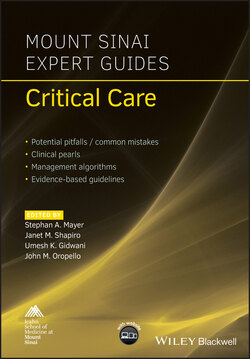Читать книгу Mount Sinai Expert Guides - Группа авторов - Страница 175
Hematologic complications
ОглавлениеBlood transfusions are commonly administered to critically ill patients. Previous practices maintained hemoglobin thresholds of >10 g/dL in the critically ill. Recent guidelines based on multicenter randomized control trials indicate that target hemoglobin values of 7–8 g/dL are associated with equivalent or better outcomes in many patient populations and reduce the risk of infection, transfusion reactions and volume overload.
The 2016 American Association of Blood Banks (AABB) guidelines include the following recommendations for hemodynamically stable patients without active bleeding:
Hemoglobin <6 g/dL: transfusion recommended.
Hemoglobin 6–7 g/dL: transfusion generally likely to be indicated.
Hemoglobin 7–8 g/dL: transfusion may be appropriate in patients undergoing orthopedic surgery or cardiac surgery, and in those with stable cardiovascular disease, after evaluating the patient’s clinical status.
Hemoglobin 8–10 g/dL: transfusion generally not indicated, but considered for some (e.g. symptomatic anemia, bleeding, acute coronary syndrome with ischemia, and hematology/oncology patients with severe thrombocytopenia who are at risk of bleeding).
Hemoglobin >10 g/dL: transfusion generally not indicated except in exceptional circumstances.
Critically ill patients pose an increased risk of developing venous thromboembolism (VTE) due to their increased length of hospitalization, inactivity, immobilization, and often hypercoagulable states. Mortality associated with deep venous thrombosis is significantly high and often progresses to more serious complications such as pulmonary embolism.
Prophylaxis for VTE should be considered in all patients and initiated at the time of admission. The majority of ICU patients fall under the high risk criteria for developing VTE and pulmonary embolism, particularly those patients who have had an operation or have had major trauma. These patients should be initiated on prophylaxis with low dose unfractionated heparin (5000 U SC every 12 hours) or low molecular weight heparin (enxaparin 40 mg SC every day) as soon as possible, if not contraindicated by bleeding or coagulopathy. Intermittent pneumatic compression devices should be provided to all patients until anticoagulants can be safely initiated.
